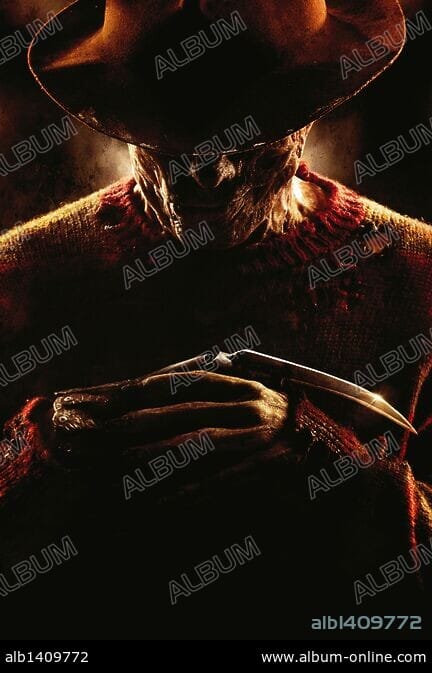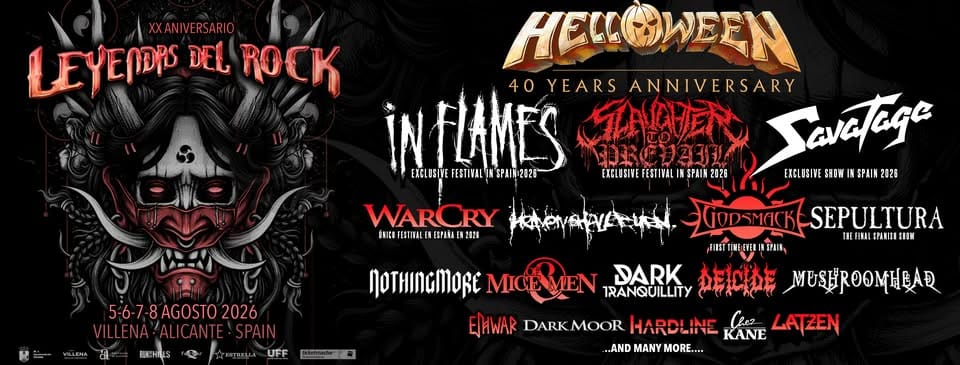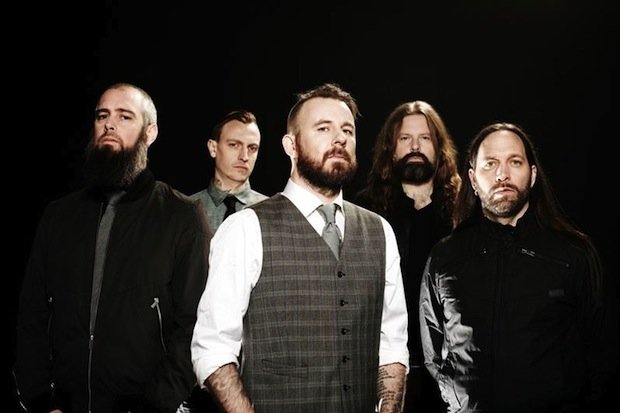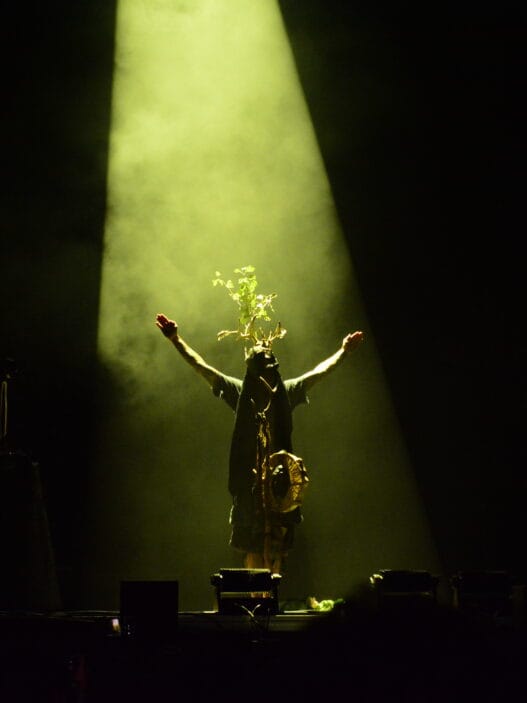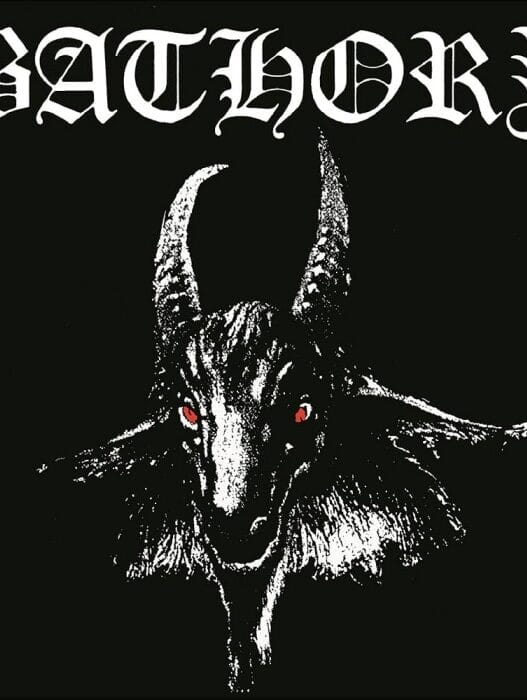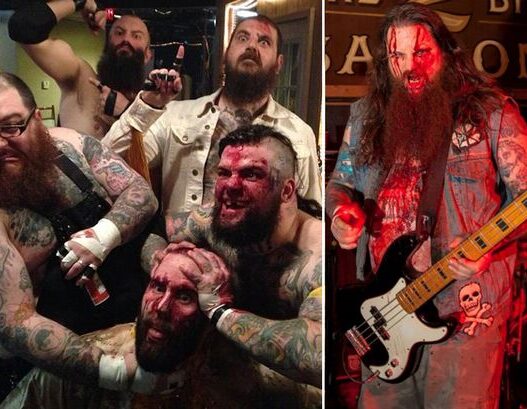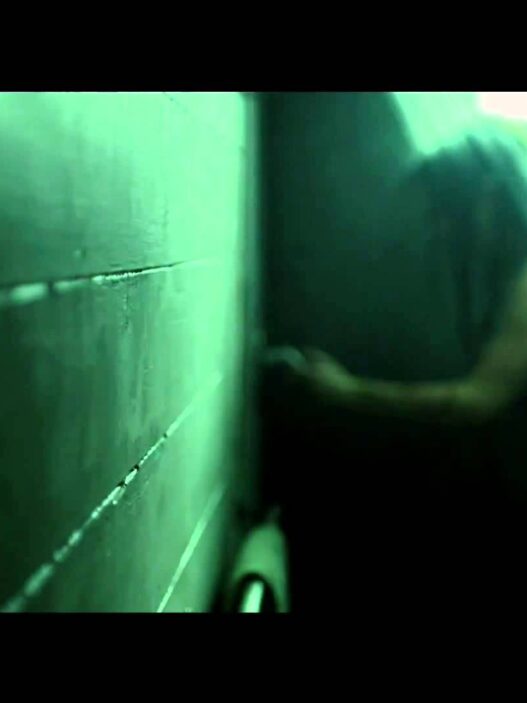(English Below)
Siempre he sentido que la relación entre el metal extremo y el cine de terror no es una simple coincidencia estética, sino una hermandad nacida de la necesidad mutua de empujar los límites. Si lo piensas bien, ambos géneros comparten un lenguaje fundamental: la fascinación por lo prohibido, la exploración de la locura y lo grotesco, y el uso catártico de la violencia y el miedo. Como fanático de ambos mundos, he dedicado años a rastrear las cicatrices que esta alianza ha dejado en la cultura popular.
Cuando escuchamos hablar de bandas sonoras de terror, nuestra mente suele ir al thrash o al heavy metal de los años 80. Sin embargo, el metal extremo ha cimentado su propio espacio, sirviendo como la banda sonora perfecta para el horror más visceral.
El factor clave aquí es la disrupción. Un riff de death metal o la atmósfera opresiva de un black metal pueden replicar el pánico mejor que cualquier cuerda disonante. Por ejemplo, en el género slasher y gore, la música de bandas como Slayer o Cannibal Corpse no es incidental; es estructural.
Recuerdo la banda sonora de la película Freddy vs. Jason (2003). Aunque la música original seguía siendo orquestal, la banda sonora comercial estaba poblada por grupos de nu-metal y metalcore, demostrando que la industria ya entendía que el público del terror se alimenta de la agresividad del metal moderno.
Pero la conexión se hace más íntima en el underground. Directores que se mueven en circuitos de cine indieo de bajo presupuesto han usado directamente el black metal noruego, por ejemplo, para crear una sensación de desesperanza total. Es la banda sonora de lo que no tiene redención. Es un hecho: la atmósfera fría y misantrópica del black metal se traduce directamente en el terror psicológico y la desesperación existencial de una película.
Películas nacidas del Metal: De la lírica a la pantalla
Lo que más me fascina no son las canciones en las películas, sino las películas que nacen de la propia cultura del metal. Aquí es donde el género trasciende el simple acompañamiento musical para convertirse en fuente de inspiración narrativa.
El ejemplo más claro, y que ha generado ríos de tinta, es la infame escena del Black Metal noruego de los años 90. Las historias reales de incendios de iglesias y asesinatos, motivadas por la ideología anti-cristiana y pagana, se convirtieron en la base de varias producciones. Películas como Lords of Chaos (2018), basada en el libro del mismo nombre, retratan la escalada de violencia de la primera escena de black metal en Oslo. Aunque la película ha sido criticada por su dramatización, es innegable que toma la historia real de bandas como Mayhem y Burzum y la transforma en una narrativa de terror psicológico y crimen.
Además, muchos directores que son fans de la música han tomado la imaginería lírica como punto de partida. Por ejemplo, la estética de las portadas de álbumes de Death Metal —llenas de violencia hiperrealista y gore— ha influido directamente en el género del torture porn o en películas con efectos prácticos brutales. Es un ciclo: las bandas se inspiran en el terror; el terror se inspira en las bandas.
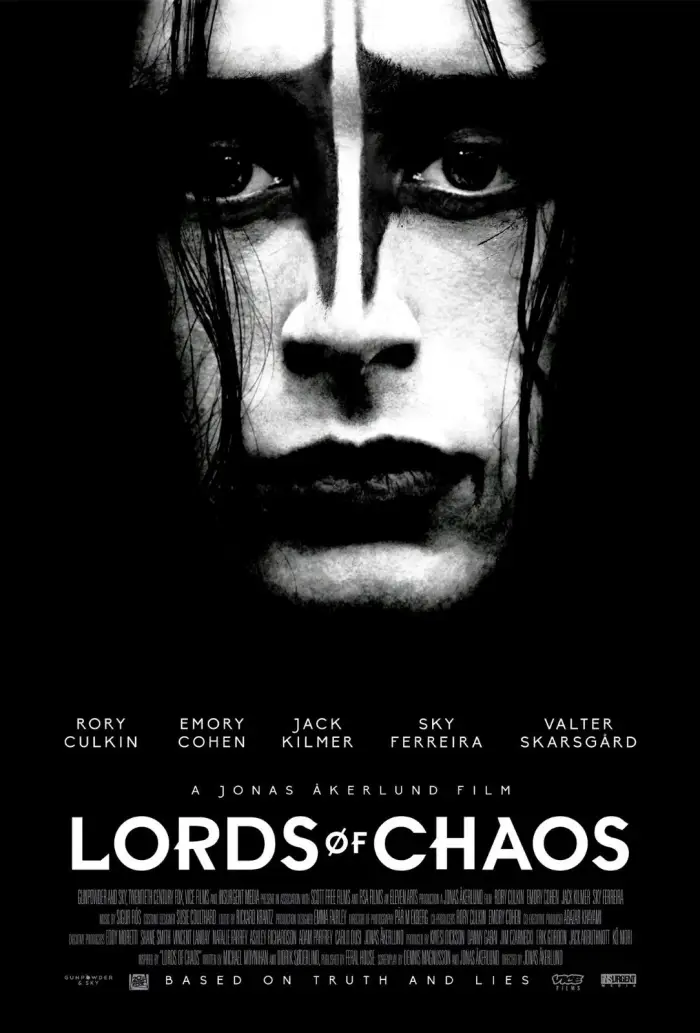
Colaboraciones y figuras híbridas: Cuando músicos y cineastas se unen
Las colaboraciones entre músicos de metal y cineastas han cimentado esta hermandad. Estas uniones van desde cameos hasta la dirección total de proyectos:
- Rob Zombie y el Horror Industrial: La carrera de Rob Zombie, tanto como músico (White Zombie) como director (House of 1000 Corpses, The Devil’s Rejects), es el epítome de esta fusión. Su estética visual, sucia, grindhouse y llena de personajes excéntricos, es una traducción directa de su música metal industrial. Zombie no usa el metal en sus películas; él hace películas de metal.
- Músicos Detrás de Cámaras: Otro caso es el de Nergal (líder de Behemoth). Aunque no ha dirigido películas de terror, su visión estética y su profunda inmersión en la mitología esotérica y el ocultismo han elevado el perfil visual de sus conciertos a un nivel cinematográfico. Es un director de su propia mitología oscura en el escenario.
- Cameos y Roles: No podemos olvidar cameos icónicos. Músicos como Corey Taylor (Slipknot) han participado en proyectos de terror, prestando su voz o su presencia a la pantalla grande, lo que subraya la aceptación de las figuras del metal como iconos culturales del horror.
Ejemplos específicos de bandas sonoras de Metal en el cine
| Película (Año) | Género | Bandas/Artistas Destacados | Tipo de Contribución |
| Spawn (1997) | Superhéroes / Terror Gótico | Slayer, Marilyn Manson, Korn, Sepultura, Fear Factory, Soulfly | Álbum de Soundtrack(colaboraciones) |
| Resident Evil: Extinction(2007) | Sci-Fi / Terror | Shadows Fall, BFMV, Static-X, Children of Bodom, Rammstein | Contribución de canciones agresivas |
| El Descenso (The Descent) (2005) | Terror Extremo / Cuevas | Varios artistas de Hardcore y Metalcore | Música ambiental y en créditos |
| La Reina de los Condenados (Queen of the Damned) (2002) | Terror Gótico / Vampiros | Jonathan Davis (Korn), Wayne Static (Static-X), Marilyn Manson, Disturbed | Álbum conceptual y Soundtrack diegético |
| Pesadilla en Elm Street(A Nightmare on Elm Street) (2010) | Slasher | Varios artistas de Metalcore y Deathcore (ej. Lamb of God) | Banda sonora para la nueva generación de fans |
| Doom (2005) | Sci-Fi / Acción y Terror | Cradle of Filth, Static-X, Scar the Martyr | Integración de música para secuencias de acción intensa |
| Metal: A Headbanger’s Journey (2005) | Documental (esencial para entender el género) | Prácticamente todo el espectro del Metal | Uso contextual de la música |
Análisis detallado de colaboraciones clave
Spawn (1997): El modelo de colaboración extrema
La banda sonora de Spawn es un caso de estudio en la integración del metal extremo en el mainstream. El concepto fue emparejar a un artista de rock o metal con un artista de música electrónica para crear un tema único. Esto resultó en colaboraciones históricas que elevaron la agresividad de la banda sonora:
- Slayer y Atari Teenage Riot en «No Remorse (I Wanna Die)».
- Sepultura y DJ Lethal en «Chaos A.D.».
Aunque no era puramente Death Metal, la inclusión de Slayer y Sepultura aseguró un nivel de intensidad y agresión sonora que rara vez se veía en una producción de estudio de ese calibre, funcionando como el pulso oscuro del antihéroe infernal.
La reina de los condenados (2002): Metal como protagonista
Esta película, basada en las Crónicas Vampíricas de Anne Rice, puso el metal en el centro de la narrativa. El vampiro Lestat se convierte en una estrella de metal cuyo sonido despierta a otros vampiros.
El vocalista principal de Korn, Jonathan Davis, fue el encargado de escribir las canciones «cantadas» por Lestat en la película. El álbum de la banda sonora contó con la colaboración de figuras clave del metalextremo y alternativo para interpretar estas canciones, incluyendo a:
- Wayne Static (Static-X)
- Corey Taylor (Slipknot)
- Marilyn Manson (quien, aunque no es Metal Extremo, comparte esa estética oscura)
La música en esta película no es solo de fondo; es el motor de la trama, demostrando que el metal puede ser el sonido de lo sobrenatural y lo seductoramente peligroso.
El Slasher moderno y el metalcore
A partir de los 2000, las franquicias de slasher y reboots de terror (como «Pesadilla en Elm Street» de 2010 o la saga «Resident Evil») adoptaron el sonido del Metalcore y el Deathcore.
Bandas como Lamb of God, Shadows Fall o Children of Bodom (aunque más Melodic Death Metal) se convirtieron en figuras recurrentes. Este cambio reflejó una evolución natural: el metalcore, con su mezcla de melodía y breakdowns contundentes, proporcionaba la banda sonora perfecta para las persecuencias frenéticas y la violencia moderna. La energía del metalcore se convirtió en el sustituto sónico del terror adolescente.
Mandy (2018): El Metal en el horror de autor
Un ejemplo más reciente y de culto es Mandy, protagonizada por Nicolas Cage. Aunque la banda sonora principal de Jóhann Jóhannsson es atmosférica y electrónica, la película está empapada en la cultura del doom metal y el stoner rock. La estética visual, con sus colores saturados y su violencia ritualística, tiene un parentesco directo con la imaginería psicodélica y oscura que domina en esos subgéneros, un guiño a la audiencia de culto del metal extremo.
Para mí, esta sinergia es inevitable. El metal extremo y el cine de terror no son meros primos lejanos; son hermanos gemelos separados al nacer por una simple cuestión de formato. Ambos ofrecen una válvula de escape, una exploración de la sombra que llevamos dentro. Y mientras haya monstruos en la pantalla y riffs feroces resonando en el underground, su alianza seguirá siendo la más poderosa y oscura de todas.
Siempre he sentido que la relación entre el metal extremo y el cine de terror no es una simple coincidencia estética, sino una hermandad nacida de la necesidad mutua de empujar los límites. Si lo piensas bien, ambos géneros comparten un lenguaje fundamental: la fascinación por lo prohibido, la exploración de la locura y lo grotesco, y el uso catártico de la violencia y el miedo. Como fanático de ambos mundos, he dedicado años a rastrear las cicatrices que esta alianza ha dejado en la cultura popular.
I have always felt that the relationship between extreme metal and horror cinema is not a simple aesthetic coincidence, but a brotherhood born of the mutual need to push the boundaries. If you think about it, both genres share a fundamental language: the fascination with the forbidden, the exploration of madness and the grotesque, and the cathartic use of violence and fear. As a fanatic of both worlds, I have dedicated years to tracing the scars that this alliance has left on popular culture.
When we hear about horror soundtracks, our mind usually goes to thrash or heavy metal from the 80s. However, extreme metal has cemented its own space, serving as the perfect soundtrack for the most visceral horror.
The key factor here is disruption. A death metal riff or the oppressive atmosphere of a black metal can replicate panic better than any dissonant string. For example, in the slasher and gore genre, the music of bands like Slayer or Cannibal Corpse is not incidental; it is structural.
I remember the soundtrack of the film Freddy vs. Jason (2003). Although the original music was still orchestral, the commercial soundtrack was populated by nu-metal and metalcore groups, demonstrating that the industry already understood that the horror audience feeds on the aggressiveness of modern metal.
But the connection becomes more intimate in the underground. Directors who move in indie or low-budget film circuits have directly used Norwegian black metal, for example, to create a feeling of total hopelessness. It is the soundtrack of what has no redemption. It is a fact: the cold and misanthropic atmosphere of black metaltranslates directly into the psychological terror and existential despair of a film.
Films born from Metal: From lyrics to the screen
What fascinates me most are not the songs in the films, but the films that are born from the metal culture itself. This is where the genre transcends simple musical accompaniment to become a source of narrative inspiration.
The clearest example, and one that has generated rivers of ink, is the infamous Norwegian Black Metal scene of the 90s. The real stories of church burnings and murders, motivated by anti-Christian and pagan ideology, became the basis for various productions. Films like Lords of Chaos (2018), based on the book of the same name, portray the escalation of violence of the first black metal scene in Oslo. Although the film has been criticized for its dramatization, it is undeniable that it takes the real history of bands like Mayhem and Burzumand transforms it into a narrative of psychological terror and crime.
Furthermore, many directors who are fans of the music have taken the lyrical imagery as a starting point. For example, the aesthetic of Death Metal album covers —full of hyper-realistic violence and gore— has directly influenced the torture porn genre or films with brutal practical effects. It is a cycle: the bands are inspired by horror; horror is inspired by the bands.

Collaborations and hybrid figures: When musicians and filmmakers unite
Collaborations between metal musicians and filmmakers have cemented this brotherhood. These unions range from cameos to the total direction of projects:
- Rob Zombie and Industrial Horror: The career of Rob Zombie, both as a musician (White Zombie) and director (House of 1000 Corpses, The Devil’s Rejects), is the epitome of this fusion. His visual aesthetic, dirty, grindhouse, and full of eccentric characters, is a direct translation of his industrial metal music. Zombie does not use metal in his films; he makes metal films.
- Musicians Behind the Scenes: Another case is that of Nergal (leader of Behemoth). Although he has not directed horror films, his aesthetic vision and deep immersion in esoteric mythology and occultism have elevated the visual profile of his concerts to a cinematic level. He is a director of his own dark mythology on stage.
- Cameos and Roles: We cannot forget iconic cameos. Musicians like Corey Taylor (Slipknot) have participated in horror projects, lending their voice or presence to the big screen, which underscores the acceptance of metal figures as cultural icons of horror.
Specific examples of Metal soundtracks in cinema
| Film (Year) | Genre | Featured Bands/Artists | Type of Contribution |
| Spawn (1997) | Superheroes / Gothic Horror | Slayer, Marilyn Manson, Korn, Sepultura, Fear Factory, Soulfly | Soundtrack Album (collaborations) |
| Resident Evil: Extinction (2007) | Sci-Fi / Horror | Shadows Fall, BFMV, Static-X, Children of Bodom, Rammstein | Contribution of aggressive songs |
| The Descent(2005) | Extreme Horror / Caves | Various Hardcore and Metalcoreartists | Ambient music and in credits |
| Queen of the Damned (2002) | Gothic Horror / Vampires | Jonathan Davis (Korn), Wayne Static (Static-X), Marilyn Manson, Disturbed | Conceptual Album and Diegetic Soundtrack |
| A Nightmare on Elm Street (2010) | Slasher | Various Metalcore and Deathcoreartists (e.g., Lamb of God) | Soundtrack for the new generation of fans |
| Doom (2005) | Sci-Fi / Action and Horror | Cradle of Filth, Static-X, Scar the Martyr | Integration of music for intense action sequences |
| Metal: A Headbanger’s Journey (2005) | Documentary (essential for understanding the genre) | Practically the entire spectrum of Metal | Contextual use of music |
Detailed analysis of key collaborations
«Spawn» (1997): The extreme collaboration model
The Spawn soundtrack is a case study in the integration of extreme metal into the mainstream. The concept was to pair a rock or metal artist with an electronic music artist to create a unique track. This resulted in historical collaborations that elevated the soundtrack’s aggressiveness:
- Slayer and Atari Teenage Riot on «No Remorse (I Wanna Die)».
- Sepultura and DJ Lethal on «Chaos A.D.».
Although it was not purely Death Metal, the inclusion of Slayer and Sepultura ensured a level of intensity and sonic aggression that was rarely seen in a studio production of that caliber, functioning as the dark pulse of the infernal anti-hero.
«Queen of the Damned» (2002): Metal as protagonist
This film, based on Anne Rice‘s Vampire Chronicles, put metal at the center of the narrative. The vampire Lestat becomes a metal star whose sound awakens other vampires.
The main vocalist of Korn, Jonathan Davis, was in charge of writing the songs «sung» by Lestat in the film. The soundtrack album featured the collaboration of key figures in extreme and alternative metal to perform these songs, including:
- Wayne Static (Static-X)
- Corey Taylor (Slipknot)
- Marilyn Manson (who, although not Extreme Metal, shares that dark aesthetic)
The music in this film is not just background; it is the engine of the plot, demonstrating that metal can be the sound of the supernatural and the seductively dangerous.
Modern slasher and metalcore
Starting in the 2000s, slasher franchises and horror reboots (like A Nightmare on Elm Street from 2010 or the Resident Evil saga) adopted the sound of Metalcore and Deathcore.
Bands like Lamb of God, Shadows Fall, or Children of Bodom (although more Melodic Death Metal) became recurring figures. This change reflected a natural evolution: metalcore, with its mix of melody and forceful breakdowns, provided the perfect soundtrack for frantic chases and modern violence. The energy of metalcore became the sonic substitute for teenage horror.
Mandy (2018): Metal in auteur horror
A more recent and cult example is Mandy, starring Nicolas Cage. Although the main soundtrack by Jóhann Jóhannsson is atmospheric and electronic, the film is drenched in the culture of doom metal and stoner rock. The visual aesthetic, with its saturated colors and ritualistic violence, has a direct kinship with the psychedelic and dark imagery that dominates in those subgenres, a nod to the extreme metal cult audience.
For me, this synergy is inevitable. Extreme metal and horror cinema are not mere distant cousins; they are twin brothers separated at birth by a simple matter of format. Both offer an escape valve, an exploration of the shadow we carry within. And as long as there are monsters on the screen and fierce riffs resounding in the underground, their alliance will continue to be the most powerful and darkest of all.
I have always felt that the relationship between extreme metal and horror cinema is not a simple aesthetic coincidence, but a brotherhood born of the mutual need to push the boundaries. If you think about it, both genres share a fundamental language: the fascination with the forbidden, the exploration of madness and the grotesque, and the cathartic use of violence and fear. As a fanatic of both worlds, I have dedicated years to tracing the scars that this alliance has left on popular culture.










